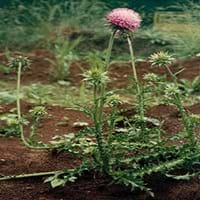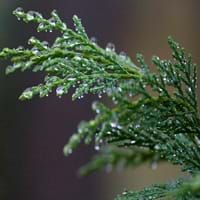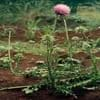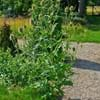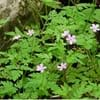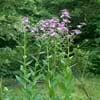Life Span
Biennial
Perennial
Type
Bulb, Flowering Plants
Needled or Scaled Evergreen
Origin
World/Pandemic, Europe, Asia
Hybrid origin
Types
Crocus tommasinianus, Crocus etruscus, Crocus vernus, Crocus cambessedesii
not available
Number of Varieties
Not Available
Habitat
gardens, Grassland, open Woodlands, orchards, Pastures, tropical environments
All sorts of environments, Alpine Meadows, High elevation, Hilly upland habitat
USDA Hardiness Zone
2-10
6-9
Sunset Zone
21,22
3b, 4, 5, 6, 7, 8, 9, 10, 11, 12, 13, 14, 15, 16, 17, 18, 19, 20, 21, 22, 23, 24
Habit
Upright/Erect
Pyramidal
Flower Color
Red, Violet
Non Flowering Plant
Flower Color Modifier
Bicolor
Bicolor
Fruit Color
Not Available
Brown
Leaf Color in Spring
Green, Dark Green
Green, Blue Green, Gray Green
Leaf Color in Summer
Dark Green
Green, Blue Green, Gray Green
Leaf Color in Fall
Dark Green
Green, Blue Green, Gray Green
Leaf Color in Winter
Light Green
Green, Blue Green, Gray Green
Leaf Shape
Ovate
needle shaped
Plant Season
Spring, Summer, Winter
Spring, Summer, Fall, Winter
Sunlight
Full Sun, Partial Sun
Full Sun
Growth Rate
Very Fast
Fast
Type of Soil
Clay, Loam, Sand
Clay, Loam
The pH of Soil
Acidic, Neutral, Alkaline
Acidic, Neutral, Alkaline
Soil Drainage
Well drained
Well drained
Bloom Time
Spring, Late Spring, Early Summer, Summer
All year
Tolerances
Pollution, Drought, Salt, Soil Compaction
Cold climate, Deer resistant
Where to Plant?
Container, Ground
Ground
How to Plant?
Seedlings
Hardwood Cuttings, Transplanting
Plant Maintenance
Low
Medium
Watering Requirements
Average Water Needs, Do Not over Water, Never Over-water, Requires regular watering
Average Water Needs
In Summer
Lots of watering
Lots of watering
In Spring
Moderate
Moderate
In Winter
Average Water
Average Water
Soil pH
Acidic, Neutral, Alkaline
Acidic, Neutral, Alkaline
Soil Type
Clay, Loam, Sand
Clay, Loam
Soil Drainage Capacity
Well drained
Well drained
Sun Exposure
Full Sun, Partial Sun
Full Sun
Pruning
Prune to stimulate growth, Remove damaged leaves, Remove dead leaves, Remove deadheads
Prune for size control, Prune if you want to improve plant shape, pruning needed for strong structure, Remove damaged leaves, Remove dead branches, Remove dead leaves
Fertilizers
Nitrogen, Phosphorous, Potassium, Requires high amount of nitrogen
All-Purpose Liquid Fertilizer, slow-release fertilizers
Pests and Diseases
Insects, Red blotch
Canker, Root rot, Stigmina needle blight
Plant Tolerance
Not Available
Cold climate, Deer resistant
Flower Petal Number
Not Available
Single
Foliage Texture
Coarse
Fine
Foliage Sheen
Glossy
Matte
Attracts
Flying insects
Birds
Allergy
Diarrhea, Nausea, Vomiting
Unknown
Aesthetic Uses
Beautification, Showy Purposes
Formal Garden, Ornamental use, Showy Purposes, Woodland margins
Beauty Benefits
Not Available
Not Available
Environmental Uses
Air purification, Food for insects
Air purification
Medicinal Uses
Unknown, Unknown
No Medicinal Use
Part of Plant Used
Stem
Not Available
Other Uses
Decoration Purposes
Acts as a natural source of rain water for birds and insects., deer resistant, Used as Christmas Tree
Used As Indoor Plant
No
No
Used As Outdoor Plant
Yes
Yes
Garden Design
Not Available
Feature Plant, Hedges, Mixed Border, Screening, Wind Break
Botanical Name
CARDUUS nutans
X CUPRESSOCYPARIS leylandii
Common Name
Musk Thistle, Nodding Thistle
Leylandii
In Hindi
कस्तूरी थीस्ल
Leyland cypress
In German
Nickende Distel
Leyland-Zypresse
In French
Musk Thistle
Cyprès de Leyland
In Spanish
Cardo de almizcle
Cupressus leylandii
In Greek
musk Thistle
Leyland Cypress
In Portuguese
musk Thistle
Cipreste-de-leyland
In Polish
Musk Thistle
Cyprysowiec Leylanda
In Latin
Carduus MOSCHUS
Leyland Cypress
Phylum
Magnoliophyta
Coniferophyta
Class
Magnoliopsida
Pinopsida
Family
Asteraceae
Cupressaceae
Clade
Angiosperms, Asterids, Eudicots
Not Available
Tribe
Cynareae
Not Available
Subfamily
Carduoideae
Not Available
Number of Species
Not Available
Not Available
Importance of Musk Thistle and Leyland Cypress
Want to have the most appropriate plant for your garden? You might want to know the importance of Musk Thistle and Leyland Cypress. Basically, these two plants vary in many aspects. Compare Musk Thistle and Leyland Cypress as they differ in many characteristics such as their life, care, benefits, facts, etc. Every gardener must at least have the slightest clue about the plants he wants to plant in his garden. Compare their benefits, which differ in many ways like facts and uses. The medicinal use of Musk Thistle is Unknown and Unknown whereas of Leyland Cypress is No Medicinal Use. Musk Thistle has beauty benefits as follows: Not Available while Leyland Cypress has beauty benefits as follows: Not Available.
Compare Facts of Musk Thistle vs Leyland Cypress
How to choose the best garden plant for your garden depending upon its facts? Here garden plant comparison will help you to solve this query. Compare the facts of Musk Thistle vs Leyland Cypress and know which one to choose. As garden plants have benefits and other uses, allergy is also a major drawback of plants for some people. Allergic reactions of Musk Thistle are Diarrhea, Nausea and Vomiting whereas of Leyland Cypress have Unknown respectively. Having a fruit bearing plant in your garden can be a plus point of your garden. Musk Thistle has showy fruits and Leyland Cypress has no showy fruits. Also Musk Thistle is not flowering and Leyland Cypress is not flowering . You can compare Musk Thistle and Leyland Cypress facts and facts of other plants too.
